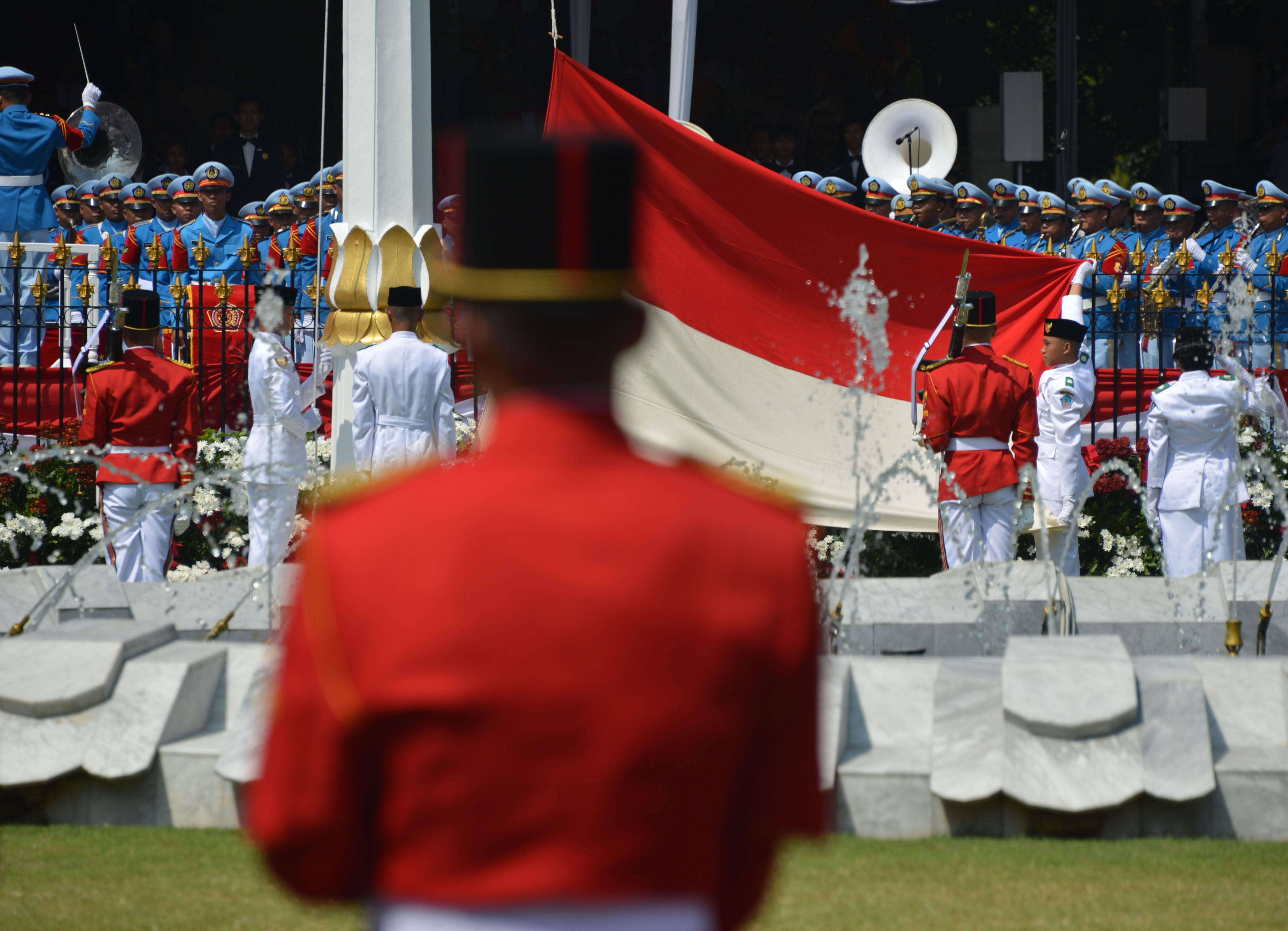The Indonesian flag caused an uproar over the weekend when the SEA Games 2017 official booklet had placed the bicolor flag upside down.
Introduced on August 17, 1945, the national flag of Indonesia was instituted as the nation's symbol for courage and purity. The red and white colours are a symbolic representation of the nation's struggle for independence. Used by nationalists and student protesters, the flag was once banned by the Dutch who ruled Indonesia as their colony in the early 20th century.
Its vexillography is rooted in the flag of the 13th century Javan Majapahit Empire which had nine red and white stripes, often hoisted by the empire’s infamous naval fleet. Until today the Indonesian Naval Forces still bears the stripes, called the ular-ular perang (war snakes) as its official naval jack.
Being the largest known empire in Southeast Asia, traces of Majapahit influence can be found in many of the ASEAN nations. Before the demise of the kingdom, its sovereignty covered Indonesia, Malaysia, Brunei, Singapore, Philippines, East Timor and Thailand.
While graphically identical to the flag of Monaco, the Indonesian flag has a slight difference in dimensions. It also shares similar features in terms of its stripes and colours (red and white) with the flags of Singapore and Malaysia. When inverted, as occurred during the debacle over the weekend, the flag resembles the flag of Poland. The Polish colours however, signify a different meaning. According to WorldAtlas, white represents hope and peace of the Polish people and red is a symbolic recollection of the eastern European country’s socialist past.
The naming of the Indonesian flag as Sang Saka Merah Putih was written into the nation's constitution in 1945. Commonly called Bendera Merah Putih (red and white flag), any reference to its official name represents the authentic first flag that was sewn by the inaugural first lady of Indonesia, Fatmawati and its replicas that are raised every Independence Day at the presidential palace.
A significant demonstration of the flag’s emblematic power was during the famed Hotel Yamato incident during the Battle of Surabaya which took place on September 19, 1945. On that day, several nationalist youth revolutionaries headed by 31-year-old Roeslan Abdulgani (who would later become a minister under the Sukarno administration) stormed into room 33 of the hotel where the Dutch had set up a temporary administrative headquarters. He demanded an explanation as to the erection of the Dutch flag over the hotel. He ratiocinated that since Japanese surrender in the Pacific, that Indonesia was free from colonial rule including that of the Dutch. In a heroic display of nationalism, Abdulgani proceeded to tear away the blue portion of the Dutch flag flown above the hotel changing it to the red-and-white Indonesian flag. The hotel which was named Hotel Majapahit before the Japanese occupation during World War II, was subsequently renamed Hotel Merdeka or Independence Hotel. The Indonesian government officially recognized the hotel as a cultural heritage landmark in 2014.
Today, the Indonesian flag is can be seen throughout the country from the estates of high-security government buildings to the homes of ordinary citizens. Outside the country, it is a permanent feature on Indonesian embassies, consular offices and diplomatic residences.
On the 8th of August 2011, to commemorate the 44th anniversary of ASEAN, the ASEAN flag was permanently raised alongside the Bendera Merah Putih at the Indonesian embassy in Berlin. According to Indonesian ambassador to Germany, Dr. Eddy Pratomo, the gesture was performed to demonstrate the “resolve of ASEAN to further enhance the identity of ASEAN and to strengthen the notion of togetherness among the citizens of the member countries”.
Fast forward to the turn of events over the recent days, and this sentiment is very much relevant in the face of the current diplomatic farce.
When contacted by The ASEAN Post, Malaysia’s leading historian Prof Emeritus Dr Khoo Kay Kim remarked that all the governments in ASEAN should get together in creating the awareness and importance of becoming a community. “ASEAN is not just about business and trade alone. We must look at the social aspects as well. The youth in ASEAN should know more about ASEAN in more ways like its culture, people, food and religion. There is no attempt to make people to understand ASEAN as whole.”
Khoo, who is attached with University Malaya added that Malaysia can play a bigger role in creating better awareness across ASEAN region as historically, it has good relationship with most of the ASEAN countries and it shares common boundaries.
A 2009 amendment to the Indonesian constitution requires the flag to be flown at the presidential palace, all of government and private office buildings, the National Heroes Cemetery, border posts and outer islands of the Indonesian territory.The same law contains provisions which explicitly dictate dates when the national flag must be displayed at either full-mast or half-mast depending on the occasion.
In the disputed Natuna islands, Indonesians living there have for long lamented their government’s inaction to their plight of poverty and squalor living conditions. Many are in fact grateful to the Malaysian government for providing aid to them in times of need. However, every morning on Pulau Natuna Besar (Great Natuna Island) the largest island in the Natuna archipelago, the Indonesian flag is raised on the Penagi pier, overlooking the South China Sea. As one citizen put it in an interview with The Jakarta Post, although the food they eat comes courtesy of the Malaysian government, for the people of the Natuna Islands, their ‘hearts are red and white’.
A fitting testament to the patriotic spirit of Indonesians, near and away. It is no wonder then, that they took the recent desecration of their national flag to heart.
